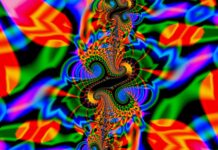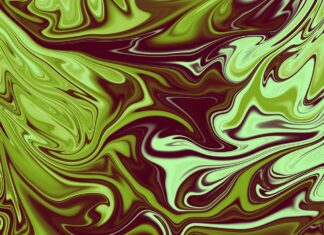Raytracing operates on the principle of simulating how rays of light interact with objects in a scene. This involves tracing rays from the camera’s viewpoint into the scene, calculating how they interact with objects, and determining the color and intensity of light at each intersection point. By accurately modeling light behavior, raytracing generates realistic images with lifelike lighting, shadows, reflections, and refractions. This level of realism makes raytracing ideal for applications such as film and animation, where visual fidelity is paramount.
- Introduction to Raytracing:
Raytracing is a rendering technique used in computer graphics to simulate the way rays of light interact with objects in a scene. Unlike traditional rendering techniques such as rasterization, which approximate the behavior of light using geometric primitives, raytracing simulates the physics of light more accurately by tracing rays of light from the camera into the scene and calculating how they interact with objects. In this guide, we’ll explore everything you need to know about raytracing, including its principles, applications, and recent advancements.
2. Principles of Raytracing:
At its core, raytracing works by simulating the path of light rays as they travel from the camera through the scene and interact with objects. This process involves casting rays from the camera into the scene, testing for intersections with objects, calculating the color and intensity of light at each intersection point, and combining these values to generate the final image. By accurately modeling the behavior of light, raytracing produces realistic images with lifelike lighting, reflections, and shadows.
3. Ray-Object Intersection:
A key component of raytracing is determining the intersection points between rays and objects in the scene. This involves testing each ray against the geometry of objects in the scene, such as triangles, spheres, or other primitives, to find the closest intersection point. Once an intersection is found, additional calculations are performed to determine the color and intensity of light at that point, taking into account factors such as surface materials, lighting conditions, and environmental effects.
4. Lighting and Reflections:
Raytracing accurately models the behavior of light by simulating complex lighting effects such as reflections, refractions, and shadows. When a ray intersects with a reflective surface, such as a mirror or shiny object, it generates a reflected ray that simulates the reflection of light off the surface. Similarly, when a ray passes through a transparent or refractive surface, such as glass or water, it generates a refracted ray that simulates the bending of light as it passes through the surface.
5. Shadows and Global Illumination:
Raytracing also simulates shadows and global illumination, which are essential for creating realistic lighting in a scene. When a ray intersects with an object, additional rays are cast from that point to determine whether it is in shadow or illuminated by other light sources in the scene. This process, known as shadow ray tracing, helps to accurately simulate the occlusion of light by objects in the scene. Global illumination techniques, such as ambient occlusion and indirect lighting, further enhance the realism of raytraced images by simulating the indirect bounce of light between surfaces in the scene.
6. Applications of Raytracing:
Raytracing is widely used in various fields, including film and animation, video games, architectural visualization, and product design. In film and animation, raytracing is used to create photorealistic visual effects and CGI scenes with lifelike lighting, reflections, and shadows. In video games, raytracing is becoming increasingly popular for rendering realistic graphics in real-time, thanks to advancements in hardware acceleration and raytracing APIs such as NVIDIA RTX and DirectX Raytracing (DXR).
7. Recent Advancements:
Recent advancements in hardware and software have accelerated the adoption of raytracing in real-time applications, particularly in the gaming industry. Graphics cards with dedicated raytracing hardware, such as NVIDIA’s RTX series, enable real-time raytracing in games, allowing developers to create visually stunning environments with cinematic lighting and effects. Additionally, game engines such as Unreal Engine and Unity have integrated support for raytracing, making it easier for developers to incorporate raytraced graphics into their games and applications.
8. Challenges and Limitations:
Despite its many benefits, raytracing also has some challenges and limitations. One of the main challenges is the computational complexity of raytracing, which requires significant computational resources to trace rays and calculate their intersections with objects in the scene. This can make raytracing impractical for real-time applications without dedicated hardware acceleration. Additionally, raytracing may struggle to handle scenes with complex geometry or large numbers of light sources, leading to increased rendering times and reduced performance.
9. Future Directions:
Looking ahead, the future of raytracing is promising, with ongoing research and development focused on improving performance, efficiency, and realism. Advancements in hardware acceleration, such as dedicated raytracing cores in graphics cards, are expected to make real-time raytracing more accessible and widespread in gaming and other applications. Additionally, techniques such as denoising and adaptive sampling are being developed to reduce rendering times and improve the quality of raytraced images, making raytracing more practical for a wider range of applications.
A fundamental aspect of raytracing is determining the intersection points between rays and objects in the scene. This process involves testing each ray against the geometric primitives that define objects, such as triangles or spheres, to find the closest intersection point. Once an intersection is found, additional calculations are performed to determine the color and intensity of light at that point, taking into account surface materials, lighting conditions, and environmental effects. This intersection testing is computationally intensive but essential for generating accurate renderings.
Raytracing accurately models complex lighting effects, including reflections, refractions, and shadows. When a ray intersects with a reflective surface, such as a mirror or glossy object, it generates a reflected ray that simulates the reflection of light off the surface. Similarly, when a ray passes through a transparent or refractive surface, such as glass or water, it generates a refracted ray that simulates the bending of light as it passes through the surface. These lighting effects contribute to the realism of raytraced images, making them visually appealing and immersive.
Shadows and global illumination play a crucial role in creating realistic lighting in raytraced scenes. Raytracing simulates shadows by casting additional rays from intersection points to determine whether they are in shadow or illuminated by other light sources. This shadow ray tracing helps accurately simulate the occlusion of light by objects in the scene, enhancing the overall realism of the rendering. Global illumination techniques, such as ambient occlusion and indirect lighting, further contribute to the realism by simulating the indirect bounce of light between surfaces in the scene, creating soft shadows and subtle lighting effects.
The applications of raytracing are widespread, spanning industries such as film, video games, architecture, and product design. In film and animation, raytracing is used to create photorealistic visual effects and CGI scenes with lifelike lighting and reflections. In video games, raytracing is increasingly used for real-time rendering, thanks to advancements in hardware acceleration and raytracing APIs. Architectural visualization and product design benefit from raytracing’s ability to create realistic simulations of lighting and materials, helping designers and architects visualize their concepts accurately.
Recent advancements in hardware and software have accelerated the adoption of raytracing in real-time applications, particularly in the gaming industry. Graphics cards with dedicated raytracing hardware, such as NVIDIA’s RTX series, enable real-time raytracing in games, allowing developers to create visually stunning environments with cinematic lighting and effects. Game engines like Unreal Engine and Unity have integrated support for raytracing, making it easier for developers to incorporate raytraced graphics into their games and applications.
Despite its benefits, raytracing also presents challenges and limitations. One of the main challenges is its computational complexity, which requires significant computational resources to trace rays and calculate their intersections with objects. This can make raytracing impractical for real-time applications without dedicated hardware acceleration. Additionally, raytracing may struggle to handle scenes with complex geometry or large numbers of light sources, leading to increased rendering times and reduced performance.
Looking ahead, the future of raytracing is promising, with ongoing research focused on improving performance, efficiency, and realism. Advancements in hardware acceleration, such as dedicated raytracing cores in graphics cards, are expected to make real-time raytracing more accessible and widespread in gaming and other applications. Techniques such as denoising and adaptive sampling are being developed to reduce rendering times and improve the quality of raytraced images, making raytracing more practical for a wider range of applications.
10. Conclusion:
In conclusion, raytracing is a powerful rendering technique that simulates the behavior of light to create realistic images with lifelike lighting, reflections, and shadows. By accurately modeling the physics of light, raytracing produces visually stunning images that are indistinguishable from photographs in many cases. While raytracing has traditionally been computationally intensive and impractical for real-time applications, recent advancements in hardware and software have made real-time raytracing a reality, paving the way for a new era of immersive and realistic graphics in film, video games, and other applications.


















